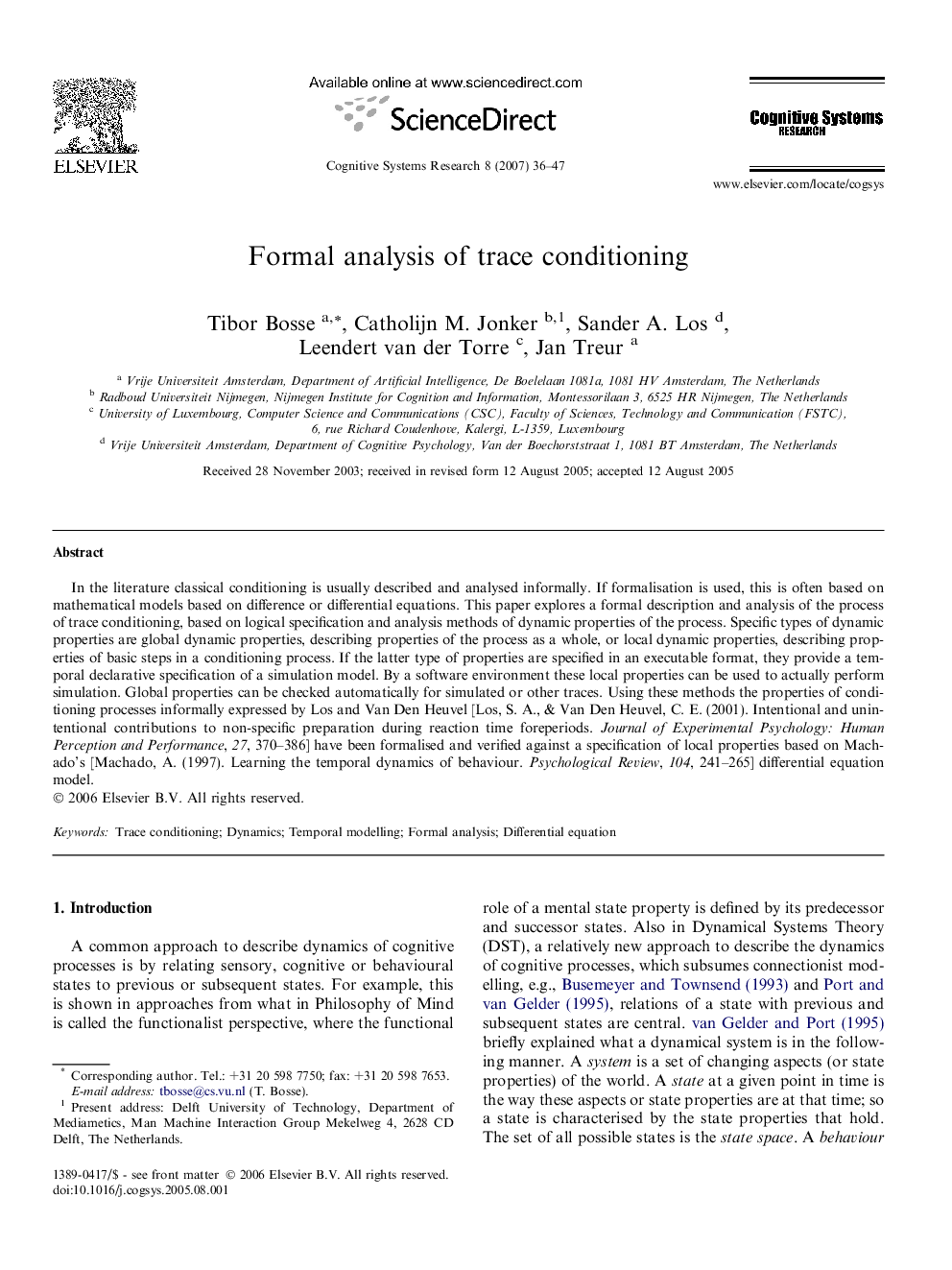| کد مقاله | کد نشریه | سال انتشار | مقاله انگلیسی | نسخه تمام متن |
|---|---|---|---|---|
| 378633 | 659175 | 2007 | 12 صفحه PDF | دانلود رایگان |

In the literature classical conditioning is usually described and analysed informally. If formalisation is used, this is often based on mathematical models based on difference or differential equations. This paper explores a formal description and analysis of the process of trace conditioning, based on logical specification and analysis methods of dynamic properties of the process. Specific types of dynamic properties are global dynamic properties, describing properties of the process as a whole, or local dynamic properties, describing properties of basic steps in a conditioning process. If the latter type of properties are specified in an executable format, they provide a temporal declarative specification of a simulation model. By a software environment these local properties can be used to actually perform simulation. Global properties can be checked automatically for simulated or other traces. Using these methods the properties of conditioning processes informally expressed by Los and Van Den Heuvel [Los, S. A., & Van Den Heuvel, C. E. (2001). Intentional and unintentional contributions to non-specific preparation during reaction time foreperiods. Journal of Experimental Psychology: Human Perception and Performance, 27, 370–386] have been formalised and verified against a specification of local properties based on Machado’s [Machado, A. (1997). Learning the temporal dynamics of behaviour. Psychological Review, 104, 241–265] differential equation model.
Journal: Cognitive Systems Research - Volume 8, Issue 1, March 2007, Pages 36–47